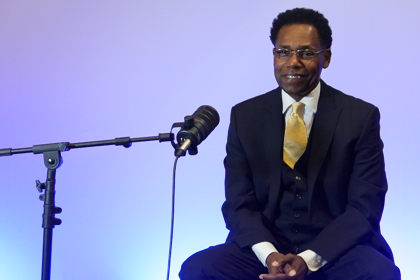When the Eaton Fire consumed Fox’s Restaurant in Altadena, owner Paul Rosenbluh hoped his insurance would provide a straightforward path to recovery. But like many small business owners across America, he’s discovering that navigating post-disaster insurance claims is anything but simple. With over 12,300 structures destroyed by recent Los Angeles wildfires alone, business owners are facing a stark awakening about their true insurance protection.
A growing crisis unfolds
Douglas Heller, director of insurance for the Consumer Federation of America, warns of a widespread misconception among business owners about their coverage extent. The reality is proving far more complex than many anticipated, with entrepreneurs facing a maze of expensive policies and overwhelmed government programs in their quest for recovery assistance.
The flood insurance gap
In Bryson City, North Carolina, Humanité Boutique owner Erin Smith learned this lesson the hard way when Hurricane Helene flooded her store. Despite maintaining general liability coverage, she discovered her policy excluded business interruption coverage, a crucial protection that would have required separate flood insurance. Her story echoes across the country as business owners confront similar revelations about their coverage gaps.
Rising costs create barriers
The insurance landscape grows more challenging as premiums continue to climb. According to J.D. Power, 36% of small business owners reported increased insurance costs last year. More troubling still, a Hiscox survey revealed that nearly three-quarters of small businesses lack understanding of what a typical business owner’s policy includes, while 83% struggle to accurately describe general liability coverage.
Government assistance limitations
When traditional insurance falls short, many business owners turn to federal programs for help. FEMA often directs affected businesses to apply for Economic Injury Disaster Loans, offering up to $2 million in working capital. However, this solution presents its own challenges, as many entrepreneurs like Smith still carry debt from previous disaster loans.
Complex claims process
The story of Isaac Herrin’s Selah Collection illustrates the intricate challenges of post-disaster claims. Despite suffering over $20,000 in inventory losses from Hurricane Helene, his claim was denied because his landlord lacked flood insurance. These interconnected responsibilities create additional hurdles for business owners seeking recovery.
Climate change impact
The insurance crisis reflects broader environmental concerns. Climate change now ranks as the fifth top concern for businesses in Allianz’s annual survey, corresponding with an increasing frequency of costly natural disasters. In 2024 alone, 27 natural disasters nationwide exceeded $1 billion in damages, according to NOAA data.
The need for reform
Industry experts, including Heller, advocate for a comprehensive federal alternative to the current insurance landscape. The National Flood Insurance Program’s limitations, particularly its lack of business interruption coverage, highlight the need for significant policy reforms to better protect small businesses.
Understanding policy details
The crisis underscores the crucial importance of thoroughly understanding insurance policies before disaster strikes. However, complex policy language and overwhelming fine print often leave business owners struggling to grasp their coverage details until it’s too late.
Industry adaptation required
As natural disasters become more frequent and severe, the insurance industry faces pressure to evolve. This includes developing clearer policies, more comprehensive coverage options, and better communication with business owners about their protection needs.
Looking forward
The challenges facing small businesses in the wake of natural disasters demand attention from policymakers, insurers, and business owners alike. Creating more effective insurance solutions while ensuring accessibility and affordability remains crucial for supporting business recovery and resilience.
Building resilience
As the frequency of natural disasters increases, business owners must take proactive steps to protect their enterprises. This includes carefully reviewing insurance policies, understanding coverage limitations, and planning for potential disasters before they strike.














